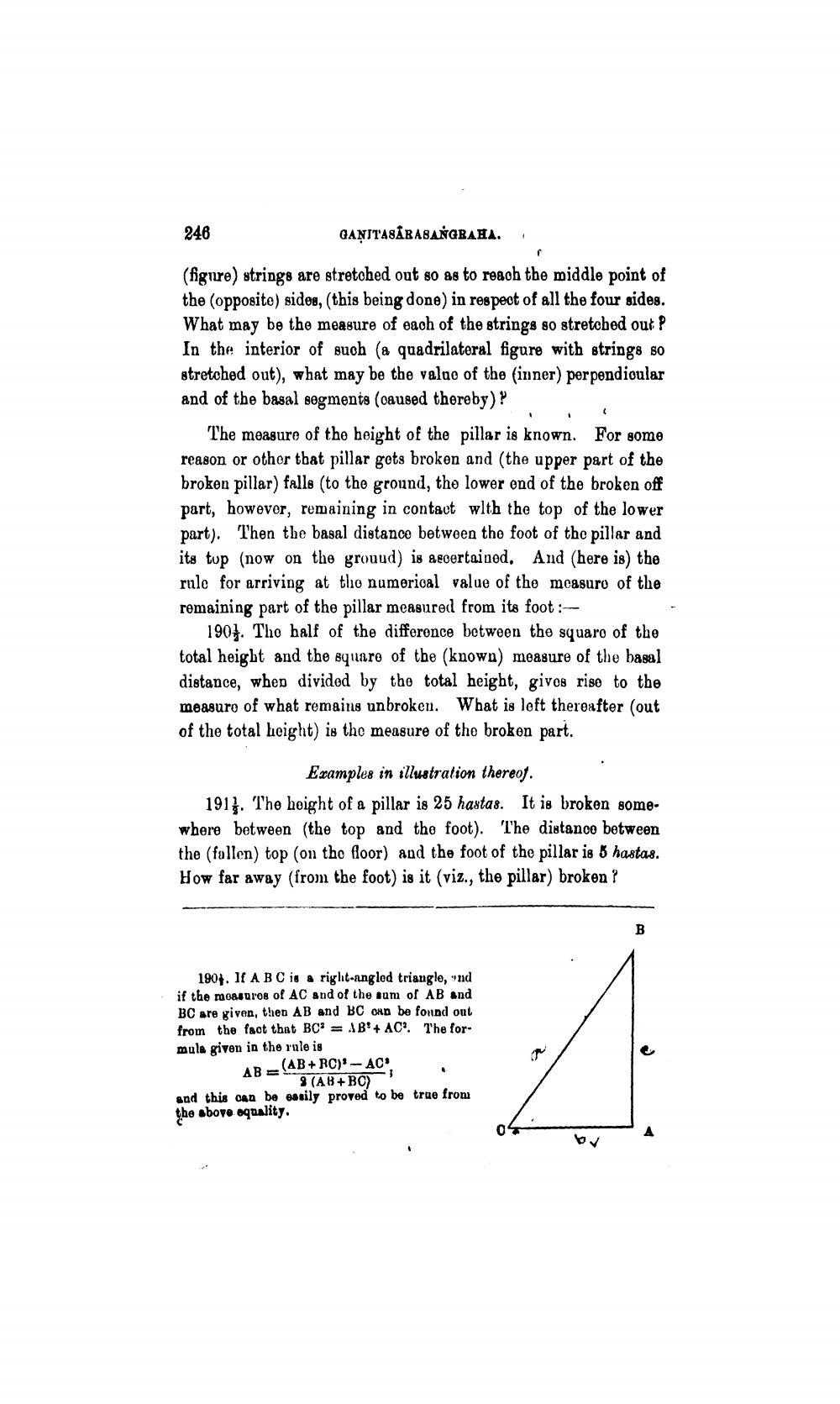________________
246
GANITASABASANGRAHA.
(figure) strings are stretched out so as to reach the middle point of the opposite) sides, (this being done) in respect of all the four sides. What may be the measure of each of the strings so stretched out P In the interior of such (a quadrilateral figure with strings so stretched out), what may be the value of the inner) perpendicular and of the basal segments (caused thereby)?
The measure of the height of the pillar is known. For some reason or other that pillar gets broken and (the upper part of the broken pillar) falls (to the ground, the lower end of the broken off part, however, remaining in contact with the top of the lower part). Then the basal distance between the foot of the pillar and its tup (now on the grouud) is ascertained. And (here is) the rule for arriving at the numerical value of the measuro of the remaining part of the pillar measured from its foot:--
1907. The half of the difference between the squaro of the total height and the square of the (known) measure of the basal distance, whep divided by the total height, gives rise to the measure of what remains unbroken. What is left thereafter (out of the total height) is the measure of the broken part.
Examples in illustration thereof. 1913. The hoight of a pillar is 25 hastas. It is broken somewhere between the top and the foot). The distance between the (fullen) top (on the floor) and the foot of the pillar is 8 hastas. How far away (from the foot) is it (viz., the pillar) broken?
1904. If A B C is a right-angled triangle, ond if the mossuros of AC and of the sum of AB and BC are given, then AB and BC on be found out from the fact that BC = AB + AC?. The formula given in the rule is
AB = (AB+ RC)' - AC
9 (AB+BO) and this 04n be easily proved to be true from the above equality.




